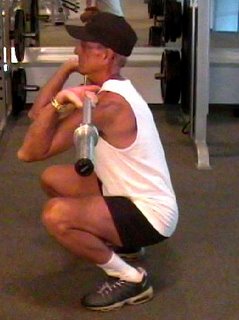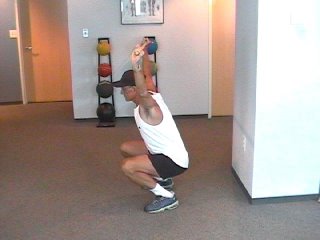Knees, Ankles and Backs: Part Two




Meet Matt and Bill. Both are athletes, over 6 feet tall. Matt is young and has no ankle flexibility. He squats like many professionals tell us too: No knees over the toes. To keep his torso upright, he must go up onto his toes, a common compensation. He cannot overhead squat. Bill, on the other hand, is slightly older and has great ankle flexibility. His heels stay on the ground. Bill can overhead squat.
Here's the rub: As little people, we squat all the time. Plop right down. Just like Bill. But as we grow older, fatter, sassier and less flexible from hours on end sitting in the classroom, the car, our work desks and the recliner we lose our flexibility and strength. People in other countries have no such luck. They kneel and squat and squat and kneel; they maintain the body's normal lower extremity flexibility and strength in relation to their bodyweight. Just like the father and son in the last post. They stay on the functional path, literally. We regress from a pure functional standpoint; even many athletes.
Are pressures on the knee joint greater with increased ankle dorsiflexion? Yes. Is that worse than the pressures increasing on the back? I would say no. If one has pre-existing knee issues, it is prudent to carefully work into good squatting mechanics. Trust me; I know. I have to work at it every day. But 'tis better to help the body gain ROM and strength about the knee; not restrict it further and relegate it and the rest of the body (the back!) to a life of compromised function. Lack of quad strength is highly correlated with back pain and dysfunction.
(How about that ancient leg extension/curl bench in the background? That thing--and there's another--STILL takes up valuable space in the high school weightroom! Why ask why anymore....)

Comments